Table of Contents
Mercedes M256 Engine (2017–Present)
The Mercedes-Benz M256 is a 3.0 L inline-6 turbocharged petrol engine, introduced in 2017. It marked Mercedes’ return to the straight-six layout, combining smoothness, balance, and modern efficiency.
The M256 powers luxury flagships like the S-Class, E-Class, CLS, GLE, and GLS, and AMG models. With features such as 48V EQ Boost, an electric eBooster, integrated starter-generator (ISG), and twin-scroll turbo, it blends performance with eco-friendly efficiency.
This guide covers the M256’s specifications, oil capacity, reliability, common issues, and comparisons with the M276 V6.
For a complete overview of all Mercedes engines, visit our Mercedes Engine Types Hub.

M256 Engine Key Specifications
| Specification | Details |
|---|---|
| Displacement | 2,998 cc |
| Layout | Inline-6, DOHC, 4 valves per cylinder |
| Power Output | 270–320 kW (362–429 hp) |
| Torque | 500–520 Nm |
| Bore × Stroke | 83 × 92 mm |
| Compression Ratio | 10.5:1 |
| Boost | Twin-scroll turbo + 48V electric eBooster |
| Fuel System | Direct injection + OPF |
| Oil Capacity | ~7.5 L synthetic (MB 229.51) |
| Service Interval | Oil ~10,000 miles; spark plugs ~60,000 miles |
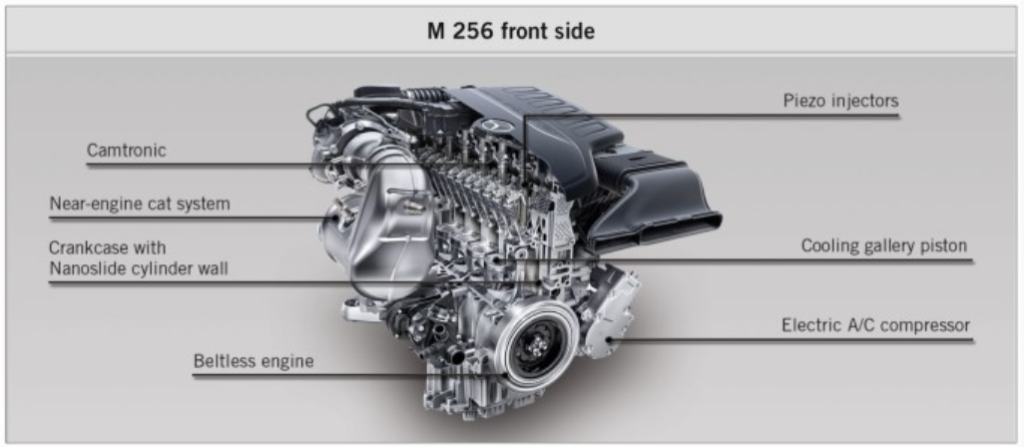

M256 Reliability
The M256 is considered robust and reliable, thanks to:
- – 48V electrical system improving efficiency and start-stop smoothness.
- – Simplified inline-six design, with inherent mechanical balance.
- – Advanced cooling and fuel systems, reducing stress on components.
However, longevity depends on regular oil changes, carbon cleaning, and proactive servicing.
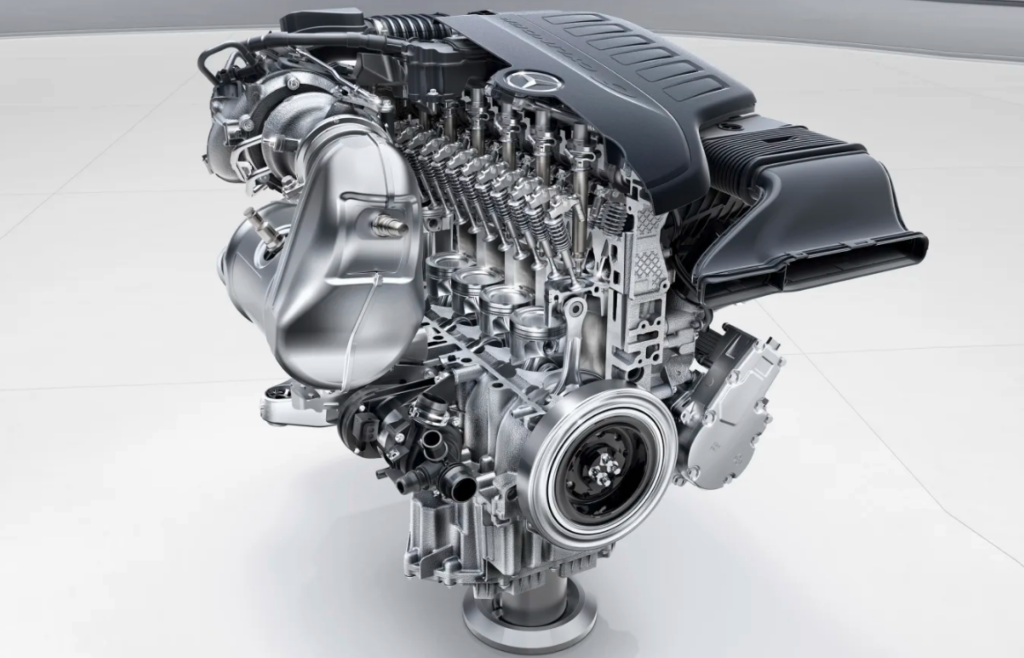
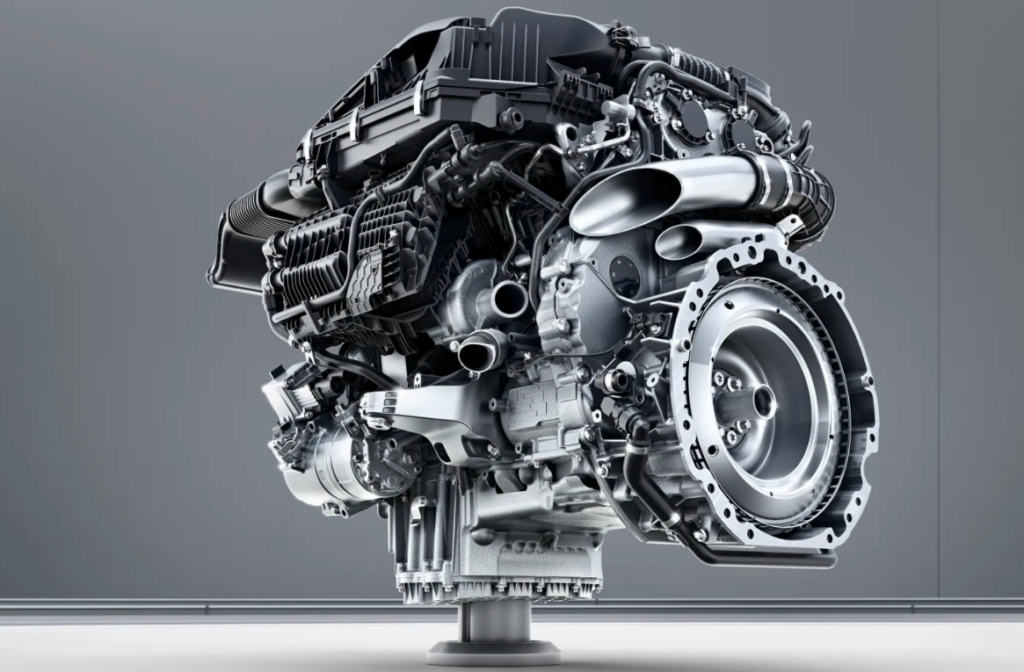
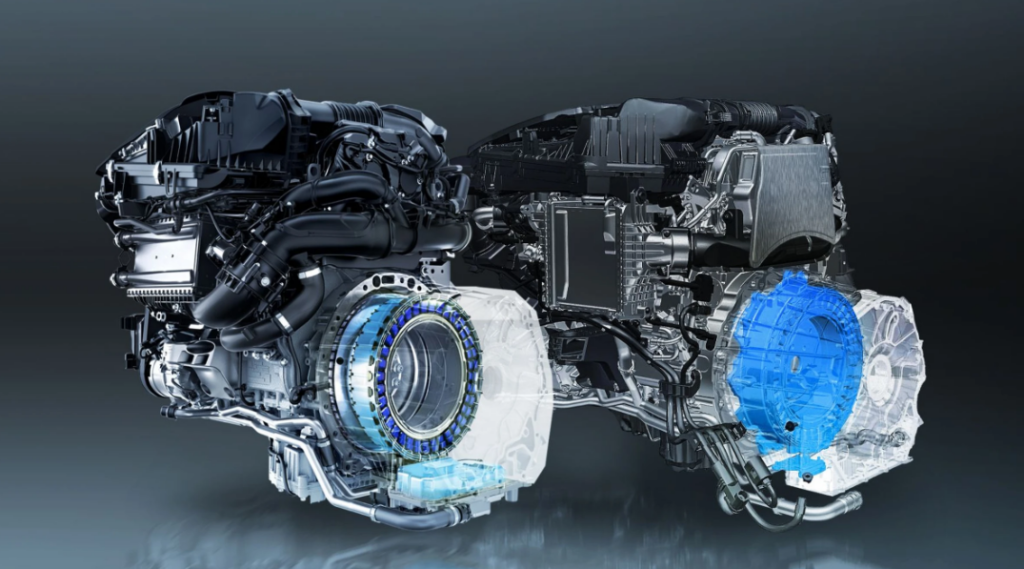
Common M256 Engine Problems & Fixes
Like any modern powertrain, the M256 has reported issues:
| Problem | Symptoms | Diagnosis & Fix |
|---|---|---|
| Oil consumption | Frequent top-ups, esp. past 60k miles | Inspect PCV & bores; top with OEM oil |
| Coolant pump / 48V issues | Erratic cooling, warning lights | Test electric coolant pump & hybrid circuits |
| Timing chain noise | Rattle on cold start | Inspect chain tensioners; replace if stretched |
| Carbon buildup | Rough idle, misfires | Walnut blasting every ~60k miles |
| Sensor/eBooster glitches | Reduced power, error codes | Update ECU, check BorgWarner eBooster |
| Cylinder scoring (rare) | Misfires, compression loss | Perform compression/leak-down test |
Related case studies: Engine Misfire in M256 | Timing Chain Issues – Explained
Recommended Maintenance Schedule
| Task | Interval |
|---|---|
| Oil & filter change | Every 10,000 miles |
| Walnut blasting (intake cleaning) | ~60,000 miles |
| Spark plug replacement | ~60,000 miles |
| Timing chain/tensioner inspection | From ~100,000 miles |
| 48V system & eBooster check | At each major service |
| Compression test | If performance declines |
M256 Engine Oil Capacity
- – Capacity: ~7.5 liters (8 quarts) with filter.
- – Recommended oil: Mercedes-approved synthetic (0W-40 or 5W-30 depending on climate).
- – Interval: Every 10,000 miles (shorter if high performance use).
M256 vs M276: Key Differences
| Feature | M276 (V6) | M256 (Inline-6) |
|---|---|---|
| Layout | V6, 60° | Inline-6 |
| Power | 329–362 hp | 362–429 hp |
| Turbo | Twin-turbo | Twin-scroll turbo + eBooster |
| Hybrid tech | None | 48V EQ Boost |
| Efficiency | Lower | Higher (reduced emissions) |
| Smoothness | Good | Excellent (perfect balance) |
Verdict: M256 is smoother, more efficient, and future-ready, while the M276 remains a solid conventional V6.
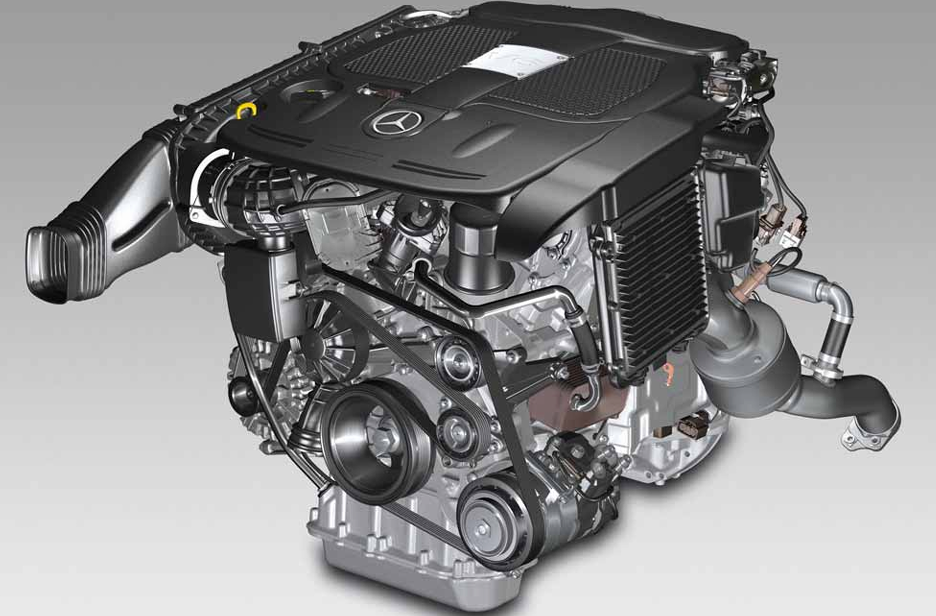
Related read: M276 Engine
Mercedes Models with the M256
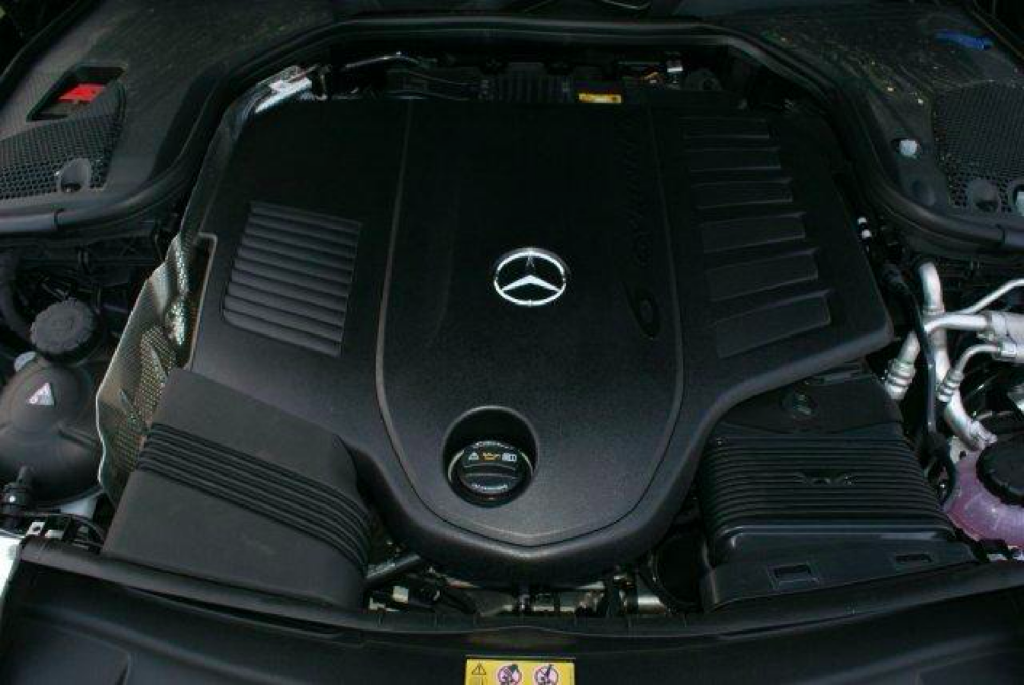
Straight-6 vs Inline-6 – Are They Different?
The terms “straight-six” and “inline-six” mean the same thing: six cylinders aligned in a straight row. This design is known for:
- – Inherent balance, minimizing vibrations.
- – Smooth power delivery ideal for luxury vehicles.
- – Simplicity compared to a V6, with fewer moving parts.
Mercedes returned to this layout with the M256 after decades of using V6 engines.
EQ Boost in the M256 Engine
The EQ Boost 48V mild hybrid system adds both efficiency and performance:
- – Instant torque assist: up to 21 hp & 250 Nm instantly available.
- – Regenerative braking: energy recovery stored in a lithium-ion battery.
- – Seamless start-stop: smoother restarts during idling and coasting.
- – Electric auxiliary compressor: reduces turbo lag and improves low-RPM response.
This system makes the M256 both more powerful and more eco-friendly.
FAQs : Mercedes M256 Engine
Q1: Is the M256 reliable?
Yes, when serviced regularly. Issues include coolant pump failures, timing chain noise, and eBooster faults.
Q2: What is the M256 oil capacity?
~7.5 L with filter. Use Mercedes-approved synthetic oil.
Q3: What cars use the M256?
E-Class, CLS, S-Class, GLE, and GLS from 2017 onwards.
Q4: How does the M256 compare to the M276?
The M256 is smoother and more efficient thanks to EQ Boost and inline-6 design.
Q5: What is EQ Boost?
A 48V mild-hybrid system that improves efficiency, adds instant torque, and powers the eBooster.
M256 Mercedes Engine Presentation video
The Mercedes-Benz M 256 engine represents a significant advancement in automotive engineering, combining performance, efficiency, and reliability. Whether you’re considering a vehicle with this engine or simply curious about its capabilities, understanding its strengths and potential issues will help you make an informed decision.
The M256 stands out not just for its technological innovations but also for the driving experience it delivers across various Mercedes models.
Conclusion
The Mercedes M256 engine represents the future of Mercedes combustion powertrains: smooth, efficient, hybrid-assisted, and reliable.
While issues such as oil consumption, coolant pump failures, and timing chain noise can occur, timely maintenance keeps the M256 running strong for years. For luxury buyers, the M256 offers the perfect blend of traditional smoothness and modern hybrid technology.
Discover more engines in our Mercedes Engine Types Hub.
Author
Written by Mercedes Expert
With years of hands-on experience diagnosing and repairing Mercedes-Benz systems, he brings technical depth and practical case studies to help car owners, technicians, and enthusiasts troubleshoot complex automotive issues. His work focuses on clear repair guides, OEM-level procedures, and knowledge-sharing to empower both professionals and drivers.
Last Updated: September 2025
— Salim, Mercedes Expert
Independent specialist in Mercedes-Benz diagnostics, CAN Bus analysis, troubleshooting case studies, and EV systems.

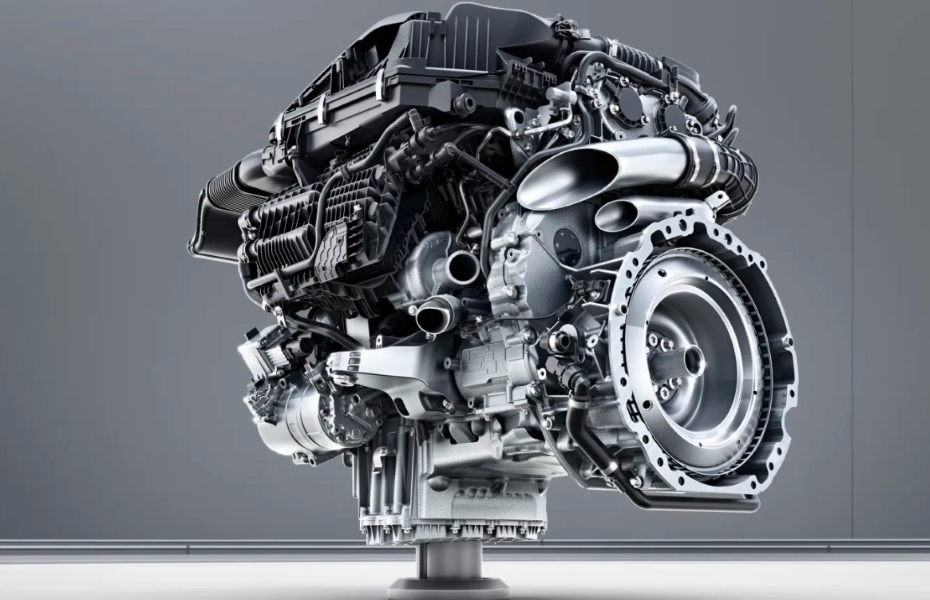

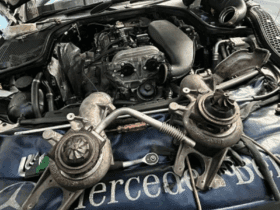



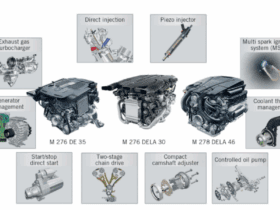
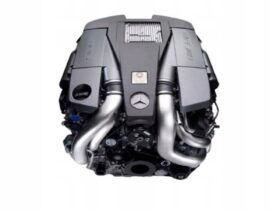
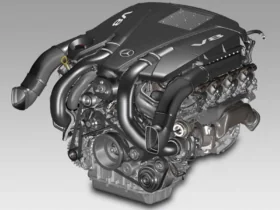
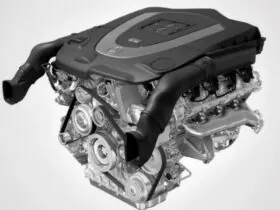
But it leaves owners completely stranded when the 48v system goes haywire and requires a $3000 battery replacement ?
Seems from Mercedes forums and elsewhere this is a very common occurrence in the 2019 – current models
48V technology is effective despite some minor issues. If you encounter battery problems, you should take the vehicle to a specialist who can repair the battery instead of replacing it